By Pete Vack
From the Archives, October 2014
There is so much to say about Lancia, and Lancia and De Virgilio: At The Center. Both topics are far too large for the confines of an online magazine so we will try to contain ourselves. But we’ll take a quick look at the book itself and then discuss the Jano/Fessia Lancias and how they differed.
At the Center
Lancia and De Virgilio: At The Center is a large book, 330 pages,11 by 11 ¾ inches, yet just big enough to contain the huge amount of information it stores between the covers. With unprecedented access to the De Virgilio family archives, Lancia enthusiast and architect Geoff Goldberg has given us an insider’s view of the achievements of Francesco De Virgilio, one of the most influential post war Italian automotive engineers.
Goldberg does this in a fashion that would do justice to Griff Borgeson, Karl Ludvigsen, and Doug Nye. To properly present this important book, six years in the making, Goldberg went to high end publisher David Bull (who was able to produce this epic for under a $100 retail price, no small achievement in itself) and obtained their full support as a publisher, ensuring that the book would be produced with the highest quality materials. Offering more support was the REVS Institute, who found many more images from the Ludvigsen/Mailander archives. Miles Collier also wrote the preface, using the opportunity to make the goals of the Revs Institute clear; his enthusiasm for the project ensured that Goldberg’s book is well documented (with ample footnotes, sources, and appendixes) and demonstrates a serious approach to automotive historical research. More importantly, Goldberg achieved and retained the support of the De Virgilio family; a rare honor for an American who according to son Luigi De Virgilio, “…had good knowledge of the European (and Italian) way of thinking and is properly cosmopolitan.”
Nigel Trow’s review pays tribute to Goldberg’s effort. For my part, I would only add that At the Center is one of the best books we have read this year. I have never read anything quite like it. Four thumbs up. READ REVIEW
The Great Divide
Francesco De Virgilio was not only ‘at the center’ but in the middle of the great divide between the Jano years and the Professor Antonio Fessia era, a transition that De Virgilio survived but not entirely happily. Goldberg explains these years in detail, for even though De Virgilio’s role was lessened under Fessia, he continued on until 1975, well after the Fiat takeover, designing truck engines, with an occasionally foray into the Fulvia and Stratos programs.
As a Lancia owner and enthusiast in the 1970s and 80s, I was lucky enough to have owned or driven Lancias designed under the Jano/De Virgilio era as well the post-1955 Fessia years. To have dismantled, nut by brass nut, a ‘lowly’ Appia sedan was a revelation; to delve into the intricacies of the Appia head and narrow angle V4 was to unveil the geniuses of Jano, De Virgilio and according to Goldberg, Cesare Mulazzani . My fellow Americans, steeped in the mighty roughhewn wide angle iron block V8s were always amazed at the brilliant engineering and aluminum castings of the tiny V4. De Virgilio owned and drove an Appia on a daily basis. But Lancias were rare in America. Reliable engines suffered under questionable electrics and they often rusted early.
The Appia was followed a few years later by a Lancia Flavia Zagato, Fessia’s front wheel drive flat four fabrication* for the post-Lancia family, post-Jano, post-De Virgilio era all of which ended abruptly in 1955.
To the Moon
Connecting this sudden flurry of Lancia enthusiasm, in the center of a unique sect of hyper-intelligent petrol heads, was often Howard Moon. He met with Nigel Trow in the UK, he knew Geoff Goldberg, and Carter Hendricks, (Goldberg recalls that “Back in college I bought a white RHD B20 from Howard Moon, and drove it for a bit. Not understanding its deep virtues, I sold it to Carter Hendricks, who still has it!) Lancia doyen Armand Giglio, and owned at various times an Aurelia Convertible, two B20s, a rare Stablimenti Farina-bodied Aurelia, several B10s, and a charming blue Aprilia coupe, and several Flavias, all kept in various states of disrepair behind his house in the rapidly-getting-fashionable and expensive area of Falls Church, VA. (That well-to-do upscalers moved into old houses in his ancient neighborhood was sure to bode ill for Moon; for Washington area residents the old saw ‘one man’s treasure is another man’s garbage’ was never so true, works of engineering genius or not. Carroll Shelby once said that there were two cities in the U.S. that were anti-automobile and Washington was the first.)
Moon was good friend of Tom Stewart Sr., (who owned more Lancias than Howard, but little else. Stewart, as I recall, aside from the famed Ferrari Mexico S/N 0224, never owned anything but Lancias, all hidden away in a shed behind an Addams Family- like house near a tiny hamlet in Northern Virginia.) It was also Moon who deftly edited the Lanciana newsletters, today offered for sale again by Steve Snyder (https://velocetoday.com/lanciana-and-friends/) As a mere trifle along the way while working for the CIA, Moon wrote Soviet SST: The Technopolitics of the Tupolev-144. the untold story of the Tupolev Tu-144 Russian supersonsic transport jet.
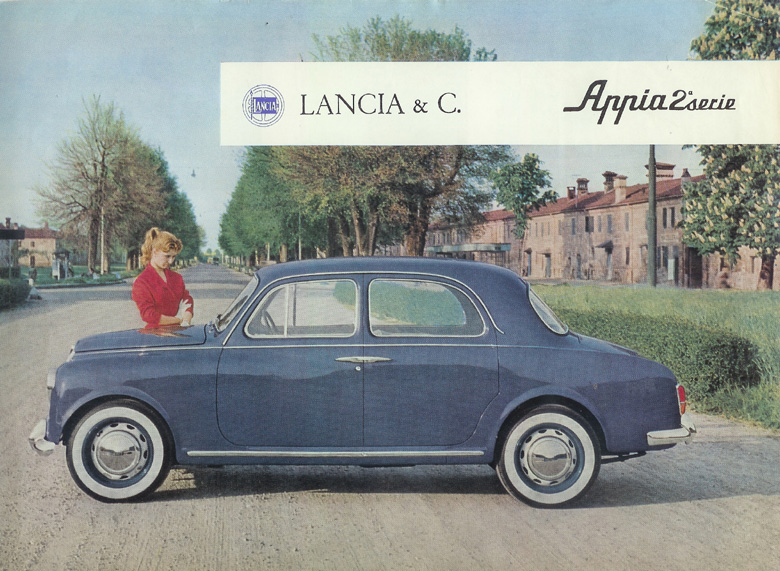
Lancias were handled in the U.S. by Hoffman Motors on the East Coast. But even the Series III was not a huge seller.
It was Moon’s truly groundbreaking De Virgilio Lancia B20 that I had occasion to drive on several occasions, therefore allowing me to experience firsthand the V4, V6, and the Fessia flat four Lancias that were the mainstays of the Lancia line from 1950 to 1970. Like Ferraris of the 50s and the Porsche 356 series, pre-Fiat Lancias were imbued with a cornucopia of engineering personality. But Lancia trumped them all, as the Ferrari’s engineering virtuosity ended at the flywheel while the truly different Porsche was made mundane by the closely related Volkswagen. Neither Ferrari production cars nor Alfa Romeo came close to the Aurelia’s chassis until the mid and late 1960s.
The differences, of course were dramatic; the Aurelia drove willingly and one could feel that rear end shifting and moving while the tires retained their grip and the clutch took hold. Forward, the V6 was the smoothest thing around until the Alfa V6, also inspired by De Virgilio, and had a sound and feel of small power, for 2.5 liters did not exactly overwhelm the weight. As modern as could be, it had a very vintage feel, probably due to the steering and front suspension.
The Appia was more fun to work on than drive, thirsty for more power and yet such an incredible jewel. The rear drive conventional chassis was more predictable but less exciting; even the Zagato lacked the performance the design promised. Yet put together with love and care and rationality, and at a great cost.
Fessia’s Flavia was a totally different story, with no links to the distant or near past, it was Fessia’s engineering dream come true since his days at CEMSA (see below) but was also ponderous, heavy, and drove nothing like earlier Lancias. The badge still said Lancia, but one wondered if the same language was being used. The 1800 cc flat four was no masterpiece, and the front drive uncomfortable. That is not to say it was not a good car; it was, in fact a fine car, but was it a Lancia?
Of the Flaminia, we never owned or drove one; an improved, though some might say not, Aurelia upgraded by the Fessia staff until not one part was interchangeable with the old Aurelia. Refinement without passion, but that is a comment without background.
What then of the Fulvia? Should I live long enough for the prices to come down again (did that once, may not make it for second round though), I should like to buy a Fulvia, a road worthy 1600 perhaps. Was this the ideal Lancia? A nearly perfect in-house body (although somewhat dated to the early 60s), Fessia’s front wheel drive mated to the narrow angle V4, penned by Ettore Zaccone Mina, and the the last iteration of the Lancia/Jano/De Virgilio/Mulazanni engineering achievement?
Was this the last real Lancia? Or perhaps the last real Lancia was the Flavia PF 2000 coupe, one of which is now owned by the aforementioned Howard Moon. This is assuming one considers the Flavias to be real Lancias in the first place. We’ll let the real Lancistis toss this one about.
Back to the beginning. Lancia and De Virgilio: At the Center allows us to better understand and appreciate the Lancias we owned and appreciated; to gain insight into the brilliant engineering work of De Virgilio that made the V6 possible and therefore the entire Aurelia concept; to understand, at least on some level, the passions, personal life and complexities of Italian industrialists, engineering and designers in the mid twentieth century. Buy a copy now: It is the best book on Italian cars this year.
*Fessia and the Caproni
Antonio Fessia was responsible for the design of the Caproni Cemsa that was first shown in 1947 at the Turin Autosalon.
Fessia’s 1100 cc Cemsa (Caproni Elettro Meccanica Societa Anonima) Caproni was an unsuccessful attempt by the famous Italian airplane builder to enter Italy’s post war car market. The Cemsa Caproni was built in the town of Saronno, the place of origin of the famous Lazzaroni Amaretto cookies and the liqueur that goes by the same name.
The Cemsa Capronis are in all ways and means to be regarded as the predecessors of the Flavia. The body was designed, and perhaps constructed by Bertone. Only two Cemsa Capronis still exist in Italy; both cars are rumored to be owned by a member of the Caproni family. The whereabouts of other Cemsas (if any at all) is unknown as of today.
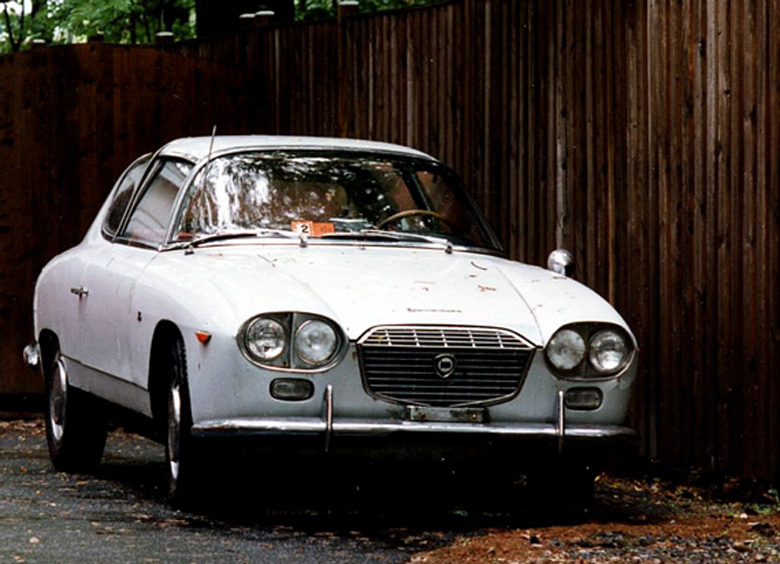
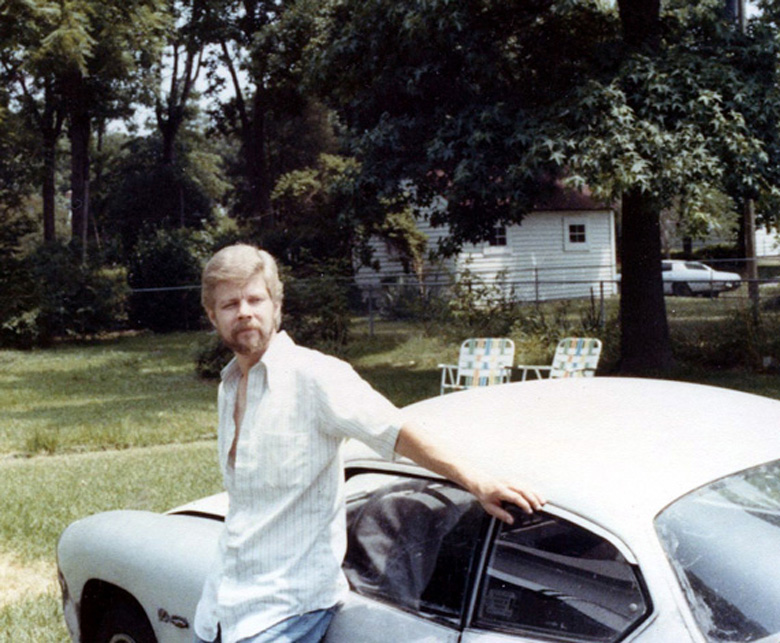
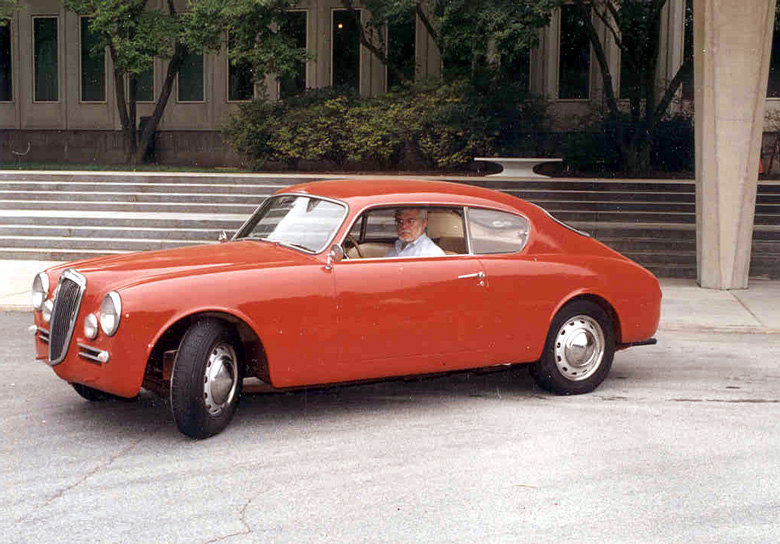
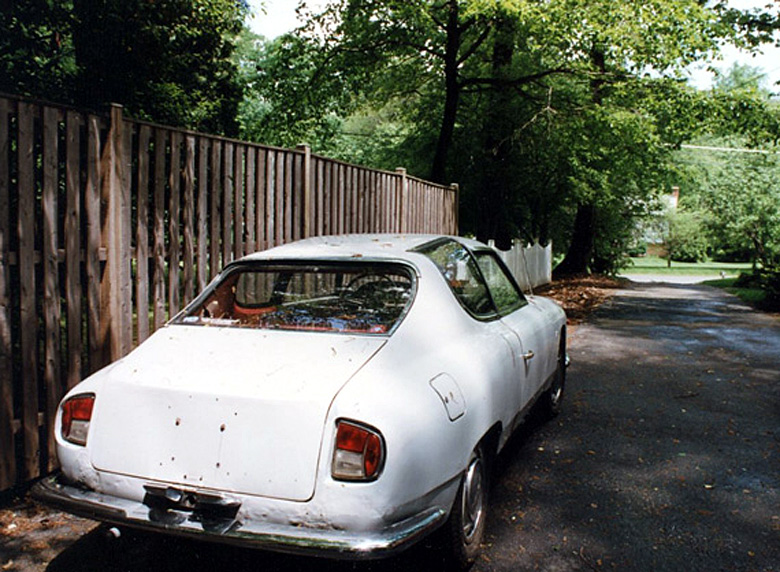
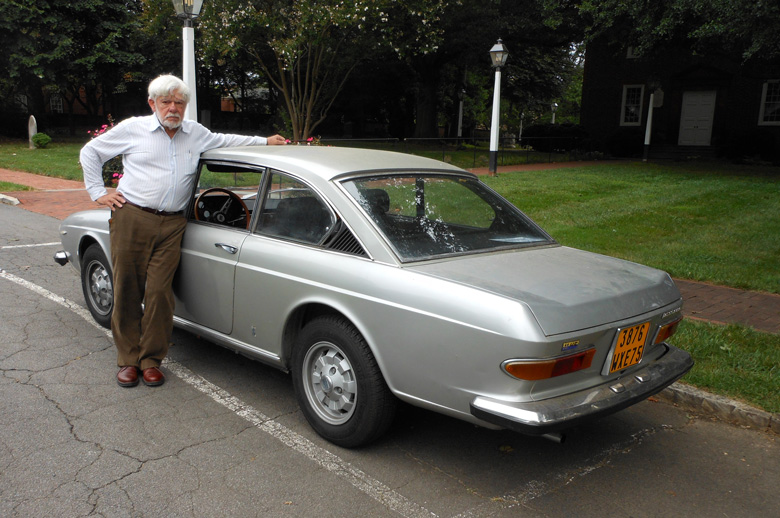
I have met Geoff at Chicago area vintage car gatherings and he is wonderful to talk to. Very patient and not surprisingly pretty much knows the answer to any Lancia question you can throw at him. I recently picked up the book and can’t wait to read it.
Perhaps one of the best books that I’ve ever read about automobiles.
Combining the art, soul, and slide rule time that it took to create some amazing motor cars, this one was a true adventure, and a brilliantly-relalized tech seminar on design, execution and personal dedication.
A true masterwork …